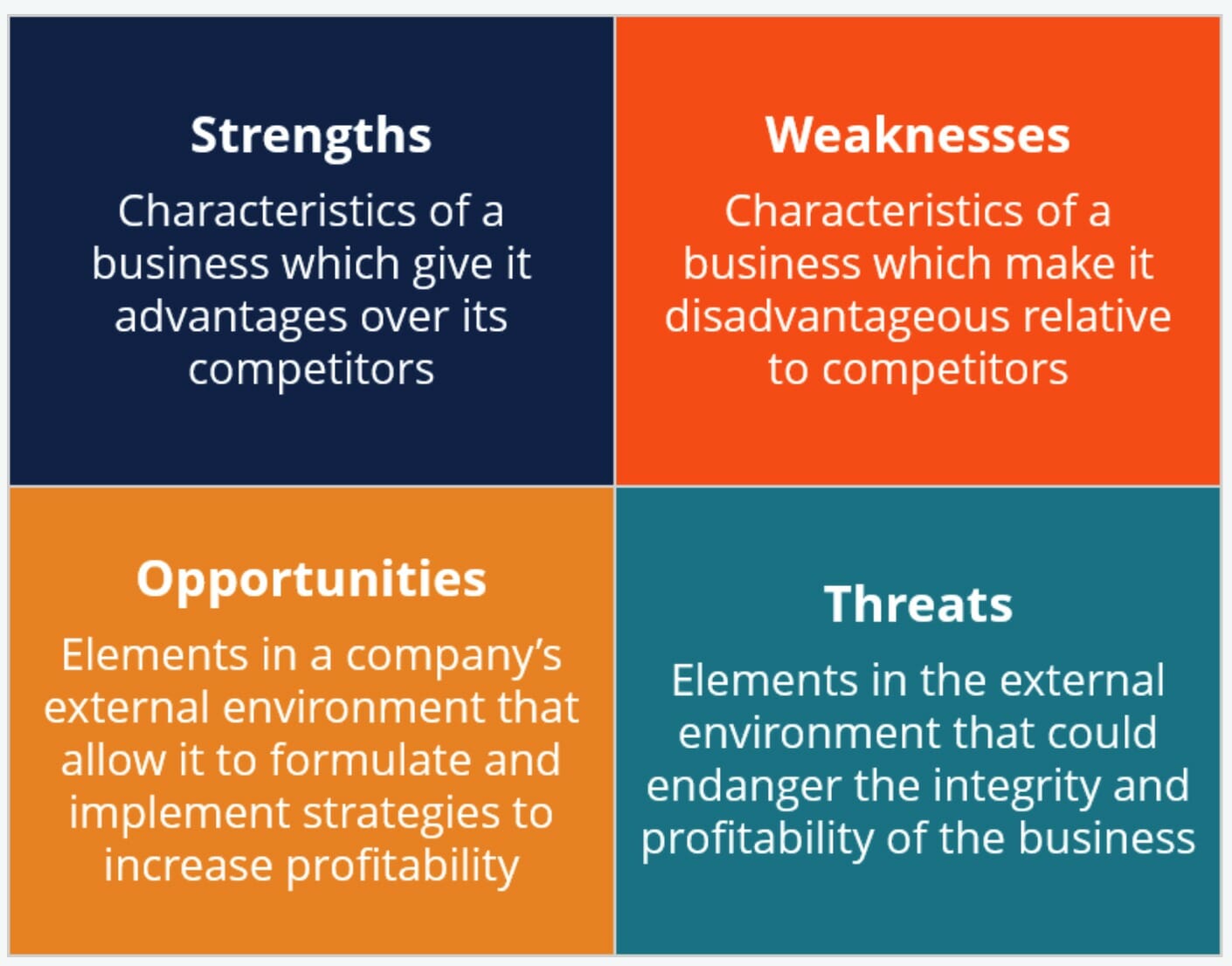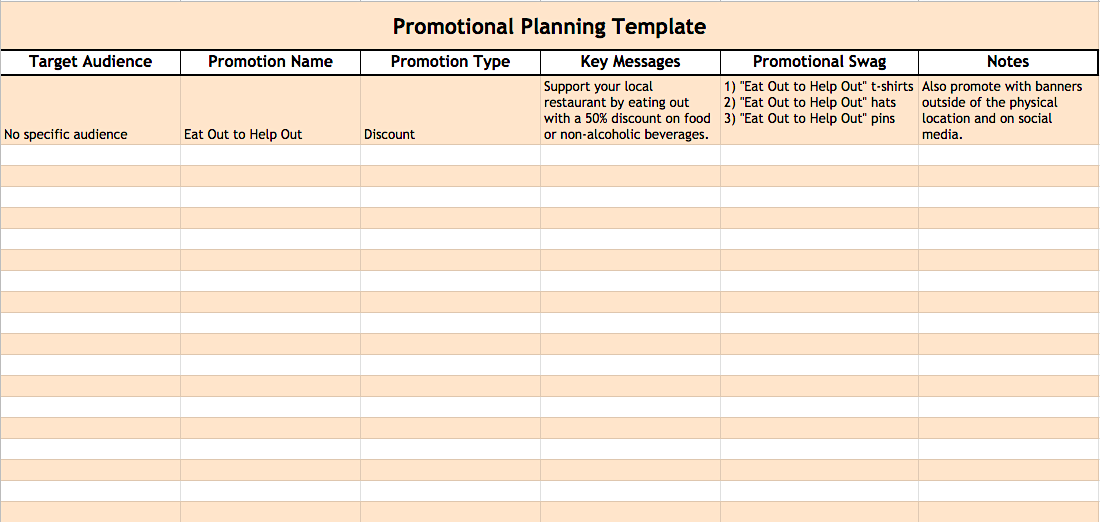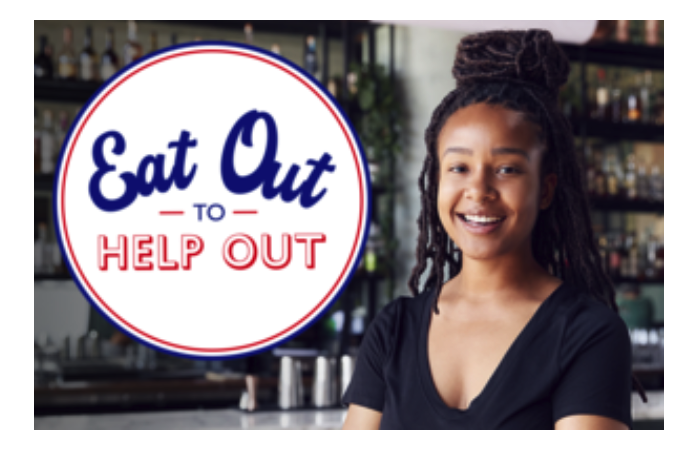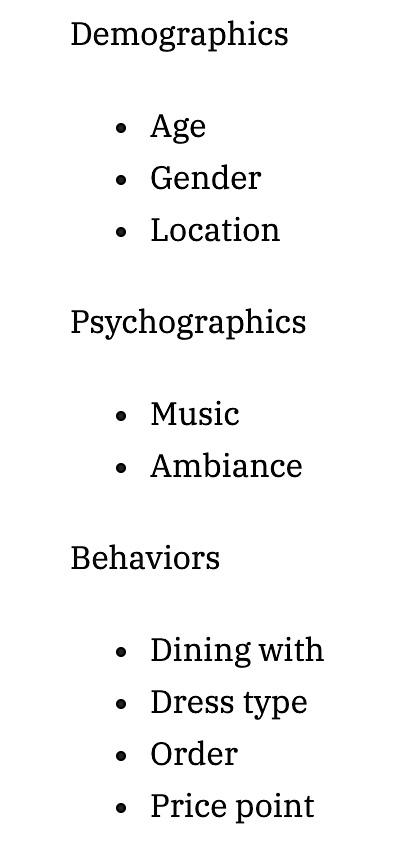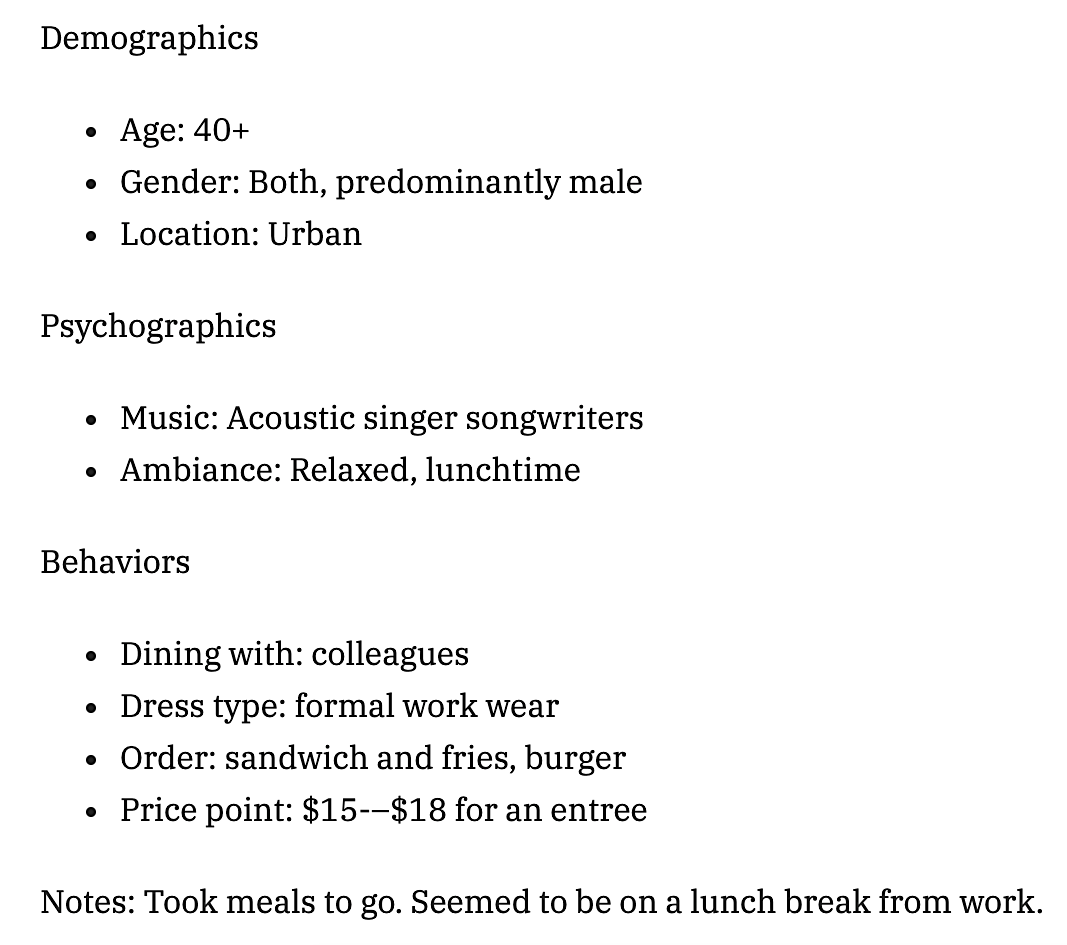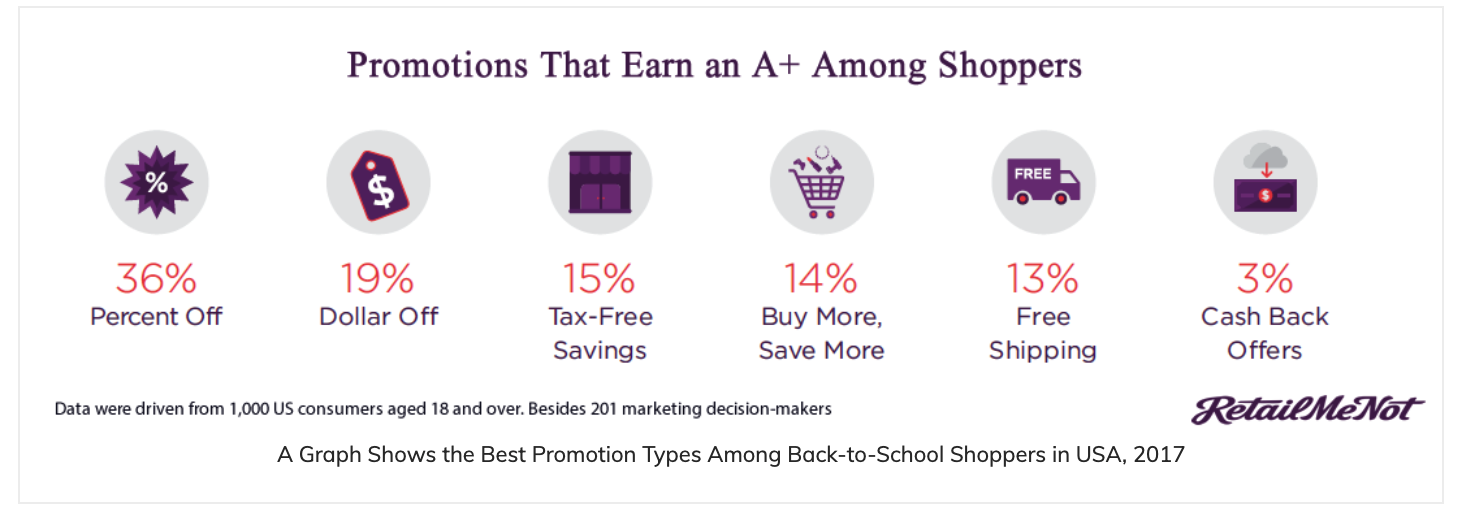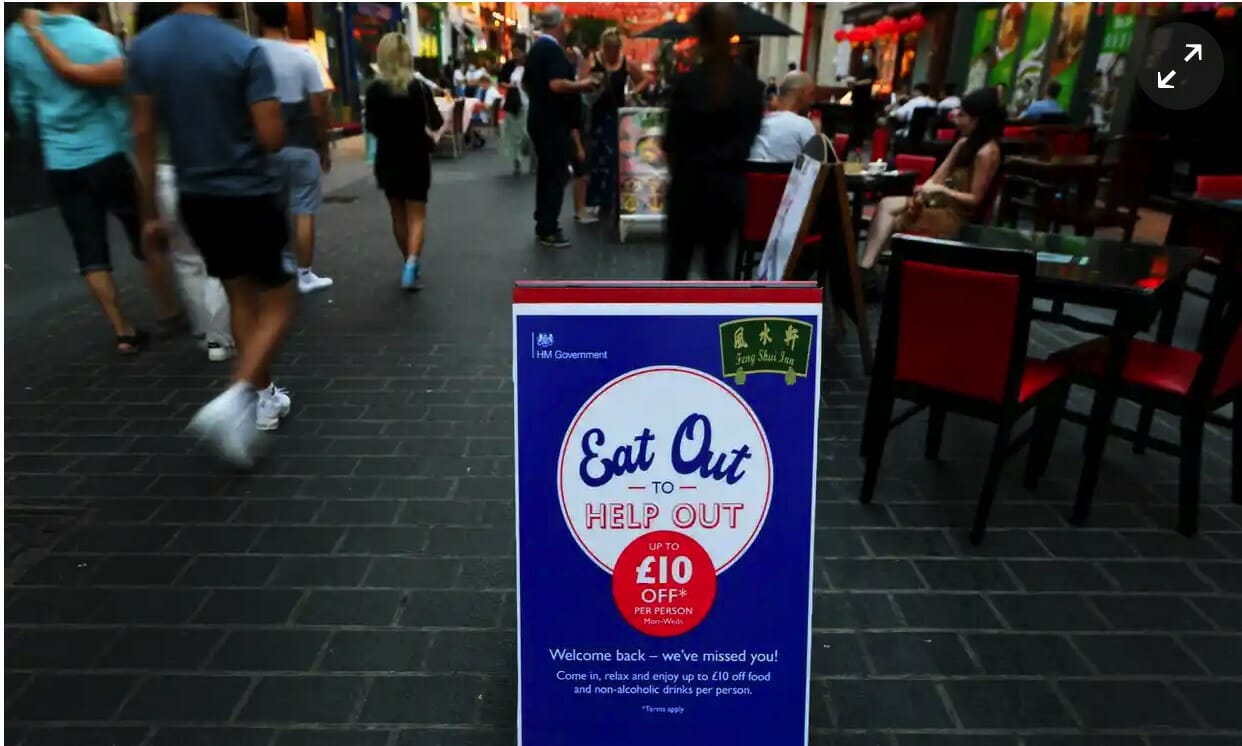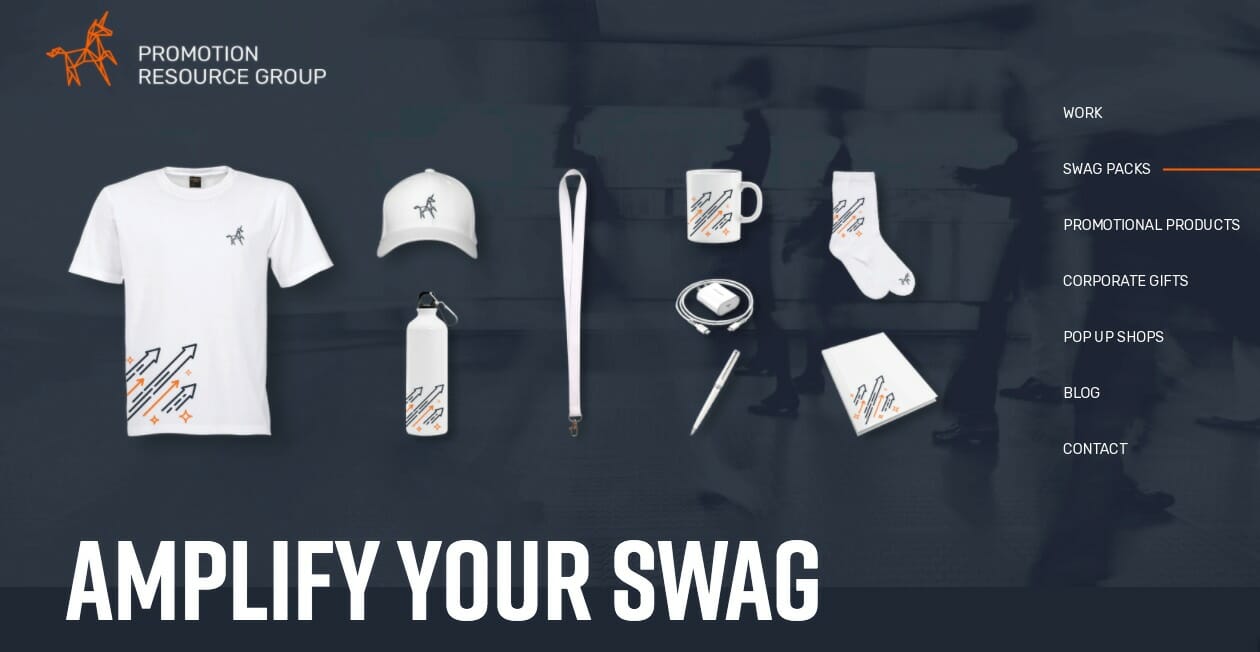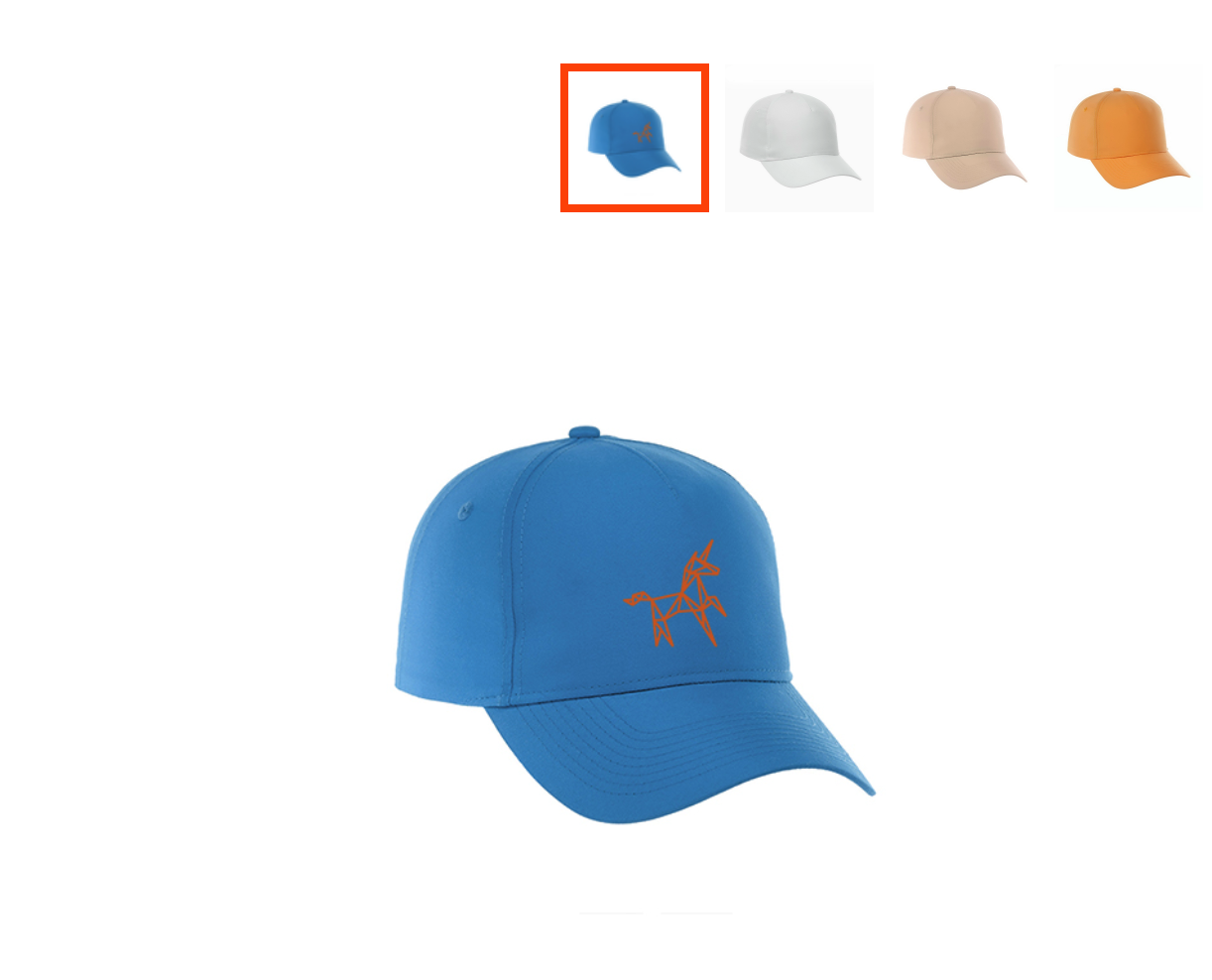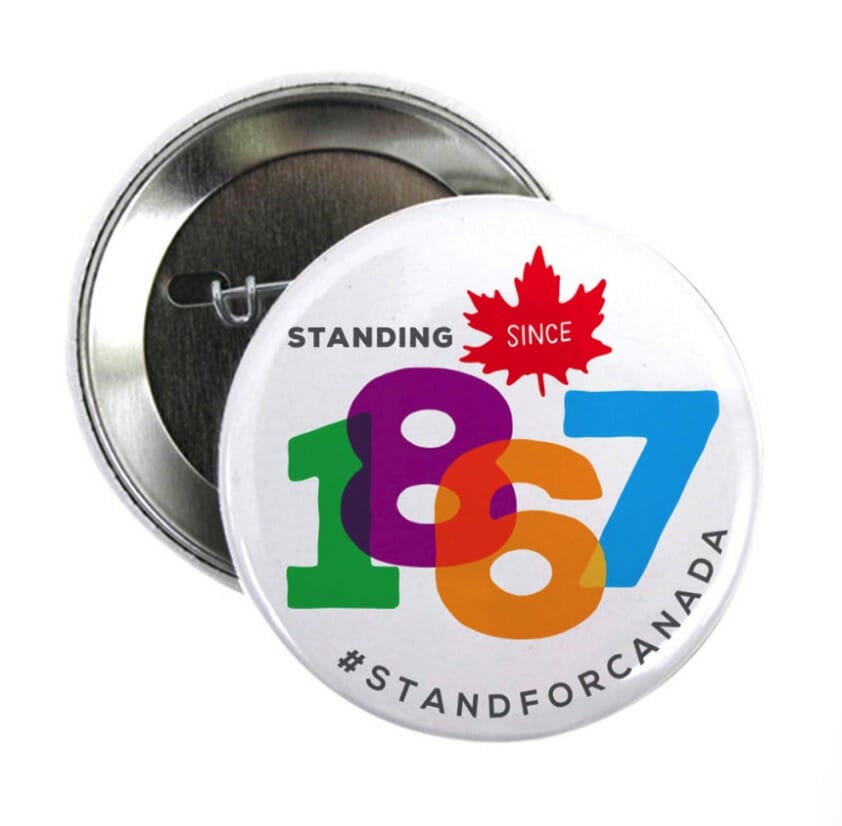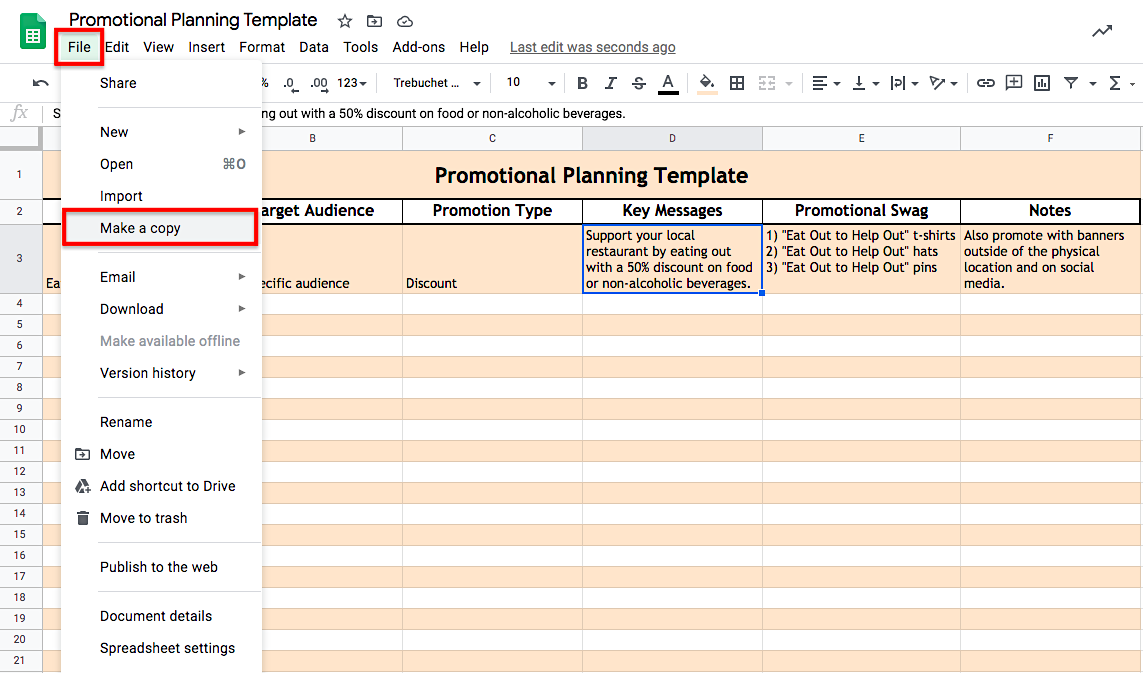How to Create a Promotional Plan for Your Business (with Template!)
[Free Consultation] Are you spending money on advertising but not getting the results you want? Are you looking for more sales and leads but have no idea where or how to start? Get help from our world-class marketing experts in a free consultation call.
Click Here To Schedule Your Free Consultation Now
Promotional planning is becoming more and more necessary for big as well as small businesses around the world.
A promotional plan highlights key elements of a company’s strategy and creates a roadmap of future tasks in a way that’s more likely to achieve business goals.
In this post, we’ll use the example of running a promotion for restaurants as we take you through the essential steps to create and work with a promotional plan.
More specifically, we’re going to talk about the following components of a promotion plan: target market, promotion name, promotion type, key messages and promotional products.
Additionally, I have prepared a promotional plan template that you can download and use.
Book My Free Marketing Consultation
TABLE OF CONTENTS:
- What Is a Promotional Plan?
- What Are the Components of a Promotional Plan?
- A Promotional Planning Template to Help You Get Started
What Is a Promotional Plan?
Before we dive deeper into the main components of a promotional plan, I think it’s absolutely necessary to understand what a promotional plan is. This will help us be more accurate in defining the future steps of a business plan, thus making it more likely for us to achieve our marketing objectives and grow.
A simple definition of a promotional plan is: an element of a marketing plan for a specific product or service.
This basically means that a marketing plan can include various promotional plans depending on the nature of each marketing campaign, such as a new product launch, as well as the overall marketing strategy of the company.
Similar to an executive summary that outlines key points of a report, a promotional plan summarizes the key points of a promotion.
Here’s a more detailed definition of a promotional plan:
In other words, the promotional plan includes a number of marketing tactics and promotional activities that the company’s marketing team will have to undertake.
Here’s what some of these activities might be:
- Public relations
- Sales promotion
- Social media marketing
- Online marketing
- Advertising
- Personal selling
After having outlined the activities and marketing efforts, you then need to put your plan out there. What’s extremely important is to make sure that you conduct some sort of situation analysis or SWOT analysis.
SWOT is an acronym for the following words:
To put it simply, such an analysis will help you track and measure the effectiveness of your promotion plan as well as your marketing plan as a whole.
Author’s Note: Keep in mind that conducting a SWOT analysis can also be beneficial for your business’ content marketing strategy, social media plan, SEO, and – in general – any other actions that your marketing department might be taking, like creating a marketing plan template.
Measuring the results and monitoring your metrics will help you understand whether you’ve put some smart goals in place when designing your plans or if you should reconsider. It’ll also give you a clear idea of how close you are to achieving your marketing goals and what your future steps should be.
Simply put, to be aware and keep track of the results will help you make sure you’re not losing time or money on an ineffective promotional plan.
Related Content:
* 10 Inspiring Examples of Promotional Campaign Videos for Startups
* Paid Content Promotion: A Comparison Of The Different Platforms
* The 4 Ps of Marketing – Are They Still Relevant Today? (Price, Product, Promotion, Place)
What Are the Components of a Promotional Plan?
In the process of talking you through the components of a promotional plan, I’m using an example to solidify my points as well as make following the plan clearer.
The steps of a promotional plan that are going to be discussed throughout this post can be found in this plan template example:
The example is inspired by a UK government promotional campaign that ran across the country after the reopening of restaurants:
The campaign’s goal was to help the industry that has been hit hard by the COVID-19 pandemic.
In this example, we’re going to plan a promotional campaign for a restaurant that’s located in London and wants to participate in the “Eat Out to Help Out” campaign.
Let’s examine the different components of the campaign, one by one.
Book My Free Marketing Consultation
Component #1: Target Audience
The first and main component of a promotional plan is the target audience, without which there can’t really be a successful promotional or any other roadmap and strategic marketing plan.
The target audience is the type of people for whom your campaign targets is made.
Whether your promotional plan is part of a digital marketing plan or an email marketing plan, it’s highly recommended that you know who your target audience is.
In terms of my example (the free promotional planning template, which you can download at the end of this post), the target audience happens to be very broad. More accurately, there’s no specific target audience because the promotion is basically addressed to all people who live within the country where the promotion takes place.
That’s no problem at all.
Defining your target audience doesn’t necessarily mean that you need to identify your buyer persona, the ideal customer, who would definitely use your product or service. It simply means that you know who you’re talking to and about. The people you’re talking to might be a non-specific target group that would potentially be interested in what you have to offer.
However, before getting to know who your target audience is, you first need to define and analyze your audience. The snapshot below from RestoHub gives us a clear idea of some of the main parameters that should be defined when it comes to the target audience of a restaurant:
We understand that by defining the aspects shown in the image above, it becomes far more likely that not only are we going to address our publicity and marketing efforts to the right people, but we’ll also offer them a solution to a problem they may have or a product or service we know they need and will use more than others.
What I believe you’ll find really interesting is seeing what the potential results of the general consumer demographic analysis might look like:
Although my promotional plan sets a rather broad target audience, your target market might have the characteristics similar to the one above.
In any case, keep in mind that defining and observing your target market will give you a very clear picture of the type of people who are drawn to your business and products.
Learn More: The Ultimate Guide to Developing Buyer Personas (with Templates!)
Component #2: Promotion Name
The second element that is necessary as one of the main components of a promotional plan is the promotion name – in other words, what the title of your promotion campaign is.
A promotion name needs to be catchy and original, something that will grab the attention of new customers as well as existing current customers while successfully conveying the idea behind the promotion.
In the campaign I’m using as an example to illustrate my point, the promotion name is Eat Out to Help Out. It not only manages to grab your attention, but it also highlights the idea of community and supporting each other in these difficult times.
This makes it easier for people to go out and eat, simply because the promotion name helps them realize that by having a bite at a restaurant they will help their community and support thousands of restaurants that have signed up to the plan.
Let’s now have a look at another promotion name that I also find very interesting and successful in terms of communicating a message. This promotion name comes from the Greek government summer campaign that is, again, in relation to the impact of the COVID-19 pandemic: Greek summer is a state of mind.
In an attempt to promote the country and boost tourism for the summer season (after the pandemic quarantine had been lifted around May 2020), the summer marketing campaign for Greece makes a serious effort to attract those who live abroad as well as Greek residents to choose Greece for their holidays.
The phrase “Greek summer is a state of mind” makes a serious effort to capture the atmosphere of the country and the attributes of the Greek summer holiday season. Additionally, it’s easy to remember. These are two aspects that you should keep in mind when building your promotional plan.
Component #3: Promotion Type
Another factor that’s essential to be identified and included in the promotion plan is the promotion type.
Some promotion types that your audience can benefit from include:
Above, you can see some of the most popular types of promotion among customers. More specifically, taking a percentage or dollar amount off the bill seems to be the most preferable type of promotion for shoppers.
Here’s a list of some promotion types specifically for restaurants:
- $$$ off the bill (discount)
- A free drink or dish when a customer spends more than a certain amount
- Loyalty coupons
- Order one, get another one for free
- Referral offerings
- Special offers on slow weekdays
- A free cocktail with a social share
In our Eat Out to Help Out example, the type of promotion is a discount. Restaurants are offering customers £10 off (almost $13 USD) per person:
It is very likely that such a discount will attract customers. Also, it gives people some motivation and makes it easier for them to overcome their doubts or fears (given the current circumstances) about eating out, thus making it more profitable for restaurants to remain open and still make the most out of their slow days.
I’d like to point out that there are promotional plans that might aim at promoting a company’s message and raise awareness without offering discounts or other promotions. In any case, you have to choose a promotion type according to what your overall goals for this campaign are.
Let’s move on to the next component, which is to define the key messages of your campaign.
Component #4: Key Message
The fourth component of your promotional plan should be to come up with the key message(s), which is something like your mission statement. Think of it as a catchphrase that will give your audience a bit more information about what your promotion is about and how they will benefit from.
When running a promotion for a restaurant, the promotional planning template might have a simple but clear key message, using easy to understand language, like this:
Support your local restaurant by eating out with a 50% discount on food or non-alcoholic drinks.
This key message includes the following useful information:
- The promotion is to do with restaurants
- The type of promotion is a 50% discount
- Discount is on food and non-alcoholic beverages
- The word ‘support’ implies that, by eating out, you’re helping the market overcome difficulties
The key message might be slightly different – in relation to length and amount of information given – than the one I’m giving you, but it certainly mustn’t be too much longer or shorter than this one because it will either lack useful information or overwhelm the reader with too much information.
In a few words, you want your key message to be short, simple and concise.
Book My Free Marketing Consultation
Component #5: Promotional Products & Swag
A component that can totally elevate your promotion and should be part of your promotional plan is branded swag and products.
Because they usually include your logo or your company’s slogan, you should think of promotional products like a distribution channel that can help bring awareness to your current promotion as well as your business as a whole. When you choose to include promotional products in your marketing mix, you basically take your promotion out to the world and thus have more of a chance of getting your message across to your audience.
What’s great about branded merchandise is that it can be almost anything – although always in relation to your company’s philosophy and taste, of course.
When running a promotional campaign, there’s a wide variety of swag products, including a swag box in which you put several useful items relating to the promotion and your brand:
In my hypothetical promotional campaign, I’m using promotional t-shirts to convey my message and promotion name:
Promotional hats are also among the most popular branded products, so why not include them as well?
Both the t-shirts and hats can be worn by members of restaurant staff, but also be given to customers as a ‘thank you’ gift.
Promotional pins are fantastic little items that have been traditionally used to get messages across as well as attract attention on a message or idea, so I thought it’d be a good idea to use them in my promotional campaign. Here’s an example of a pin below:
Pins are super easy to wear and they can be worn by members of staff or also be sent out to people as an alternative to flyers (which are usually thrown away).
Having defined the promotional products we’re going to use for this campaign, we can now move forward with the last component I have for you.
Related Content:
* What Is Phygital Marketing?
* Attention Marketing: 10 Tips to Acquire More Customers
* Creative Marketing Strategies: How to Market a Cannabis Company
Component #6: Notes
Notes are the final component that I think are very helpful in a promotional plan.
Although it might sound too simple or even needless to mention, notes will help you write down and therefore keep track of additional comments, information, and promotional ideas or actions you might want to take. In other words, try to use notes as a tool that’ll help you make sure you’re not forgetting any brilliant ideas that will fire up the effectiveness of your promotional plan.
I’ve definitely used the notes column in my promotional plan template to write down a few additional ideas for promoting my campaign. For example, I thought promotional banners outside the restaurant, alongside digital banners posted on social media platforms, would significantly help me bring more awareness to my campaign.
A Promotional Planning Template to Help You Get Started
After having broken down the components of a promotional plan, here’s the promotional plan example I promised I’d give you.
Click here for access to the Promotional Planning Template (be sure to save a copy to your own computer to use it):
The columns are as discussed above and include all essential information about the promotion. Make sure to copy/download it and start using it to build your promotional plans!
Book My Free Marketing Consultation
Last Word on Promotional Plans
In this post, we’ve discussed the definition and importance of a promotional plan, some of the main activities that such a plan might include, and what the components of a promotional plan should be in order to be concise and successful in achieving your goal.
After presenting the main components of a promotional plan, I’ve also shown you a promotional planning template that we’ve prepared and I’m sure you’ll find very convenient and easy to use.
Given that we’ve been working with promotional products for nearly 30 years, we are confident that we can help you with your promotional planning in terms of reaching out to people and bringing awareness to your goal by using high-end branded products.
Feel free to contact us and discuss the power that promotional items can bring to your promotional campaigns.
Good luck!

